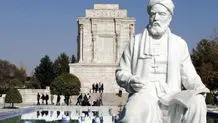Omar Khayyam; Persian mathematician, astronomer, poet
Persian poet, mathematician, astronomer, and philosopher Khayyam adopted quatrains, the most compressed form of classic poetry in Farsi, to express the gist of his thoughts.

MEHR: Persian poet, mathematician, astronomer, and philosopher Khayyam adopted quatrains, the most compressed form of classic poetry in Farsi, to express the gist of his thoughts.
Although Khayyam did consider himself a poet, he is much better known as a poet since English poet Edward FitzGerald was the first person who introduced this Persian genius to the world as a poet.
Few people have not heard of the Rubaiyat of Omar Khayyam, but the fame of his poetry in the West has only existed since 1839 when Edward Fitzgerald published an English translation of Khayyam’s Rubaiyat (“Quatrains”).
It has since become a classic of world literature and is largely responsible for influencing European ideas about Persian poetry and literature.
Before that, it was his brilliance as a scientist that made his reputation, and his legacy was a calendar more accurate than the one we currently use.
The young Omar was an avid student and quickly became skilled in mathematics, astronomy, and philosophy.
He spent most of his life in Persian intellectual centers such as Samarkand and Bukhara and enjoyed the favor of the Seljuk sultans who ruled the region.
Khayyam wrote several works including Problems of Arithmetic, a book on music, and one on algebra before he was 25 years old.
In 1070 he moved to Samarkand in Uzbekistan, which is one of the oldest cities in Central Asia. There, Khayyam was supported by Abu Tahir, a prominent jurist of Samarkand, and this allowed him to write his most famous algebra work, Treatise on Demonstration of Problems of Algebra.
As a mathematician, Khayyam discovered that a cubic equation can have more than one solution. He demonstrated the existence of equations having two solutions but does not appear to have found that a cubic can have three solutions.
Outside the world of mathematics, Khayyam is best known for nearly 600 short four-line poems in the Rubaiyat.
Interestingly, Khayyam’s poetry was not published in the Muslim world until 200 years after his demise.
These delays in publication lead some to doubt whether Khayyam wrote the Rubaiyat, or whether it was a later author.
After careful analysis, however, most scholars now agree that he is the author, revealing a philosophical side to Khayyam that few of his contemporaries knew.




